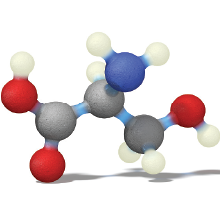Journal Digest
Hoarding Symptoms Prevalent in People with Eating Disorders

Although the comorbidity between obsessive-compulsive disorder and hoarding is well established, less is known of the association between hoarding and other psychiatric illnesses. A study by researchers at the University of Padova, Italy, has found evidence of hoarding behaviors in a variety of mental disorders, most notably in eating disorders.
The group evaluated 124 psychiatric patients using the Saving Inventory-Revised (SI-R) scale, a 23-item self-report questionnaire which quantifies compulsive hoarding. The results revealed that 9 of 41 patients (22.5 percent) with an eating disorder exceeded the cut off for hoarding disorder on their total SI-R scores, followed by 3 of 39 patients with depression (7.7 percent), 2 of 27 with an anxiety disorder (7.4 percent), and 1 of 17 with psychosis (5.9 percent). As a comparison, hoarding disorder symptoms were identified in 2 of 48 healthy subjects (4.2 percent) who participated in the study.
In addition, while the patients with depression, anxiety, or psychosis primarily reported having a harder time discarding items, patients with an eating disorder scored higher on both the item acquisition and discard scales.
There were no associations between hoarding severity, mental illness duration, and age, suggesting that when hoarding is a comorbid condition, it does not seem to worsen over time.
This study appeared in Frontiers of Psychology.
Novara C, Bottesi G, Dorz S, Sanavio E. Hoarding Symptoms Are Not Exclusive to Hoarders. Front Psychol. November 10, 2016;7:1742.
Amino Acid Restores Pitch Sensitivity Lost in Schizophrenia

A study published in the journal Brain suggests that the amino acid D-serine may be able to help people with schizophrenia better distinguish subtle changes in pitch, a common problem that can hinder this population’s ability to communicate effectively.
Researchers, led by Joshua Kantrowitz, M.D., assistant professor of clinical psychiatry at Columbia University Medical Center, asked 40 stabilized schizophrenia patients and 42 healthy controls to listen to a series of paired auditory tones and indicate the higher tone in each pair. With each correct answer, the pitch difference (in Hertz) between the tone pairs were moved closer together in the next pair; an incorrect guess led the tones to be moved further apart.
On average, participants who did not have schizophrenia could discern between tones with a pitch difference as small as 3 percent, while schizophrenia patients needed an average 16 percent difference in pitch to distinguish a pair.
Kantrowitz and colleagues next tested whether a dysfunction in NMDA receptors contributed to this deficit in pitch discrimination by providing a second group of schizophrenia patients with either D-serine, which activates NMDA receptors, or a placebo once a week for up to three weeks prior to a testing session.
The patients taking D-serine significantly improved their pitch detection over the course of the listening session compared with the placebo group, but only when D-serine was taken for at least two consecutive weeks.
Kantrowitz J, Epstein M, Beggel O, et al. Neurophysiological Mechanisms of Cortical Plasticity Impairments in Schizophrenia and Modulation by the NMDA Receptor Agonist D-Serine. Brain. December 2016; 139(Pt 12):3281-3295.
Anxiety Levels Predict Cognitive Problems in MS Patients

Anxiety disorders are common among patients with multiple sclerosis (MS), and a study published in the Journal of Neuropsychiatry and Clinical Neurosciences now suggests that anxiety is a strong predictor of cognitive performance among MS patients.
These findings were based on assessments of 322 MS patients who were attending an outpatient clinic at the John Hunter Hospital in Newcastle, Australia, and agreed to undergo annual cognitive and behavioral evaluations.
A total of 34 percent of this cohort met the criteria for cognitive impairment. The researchers also evaluated the frequency of depression, anxiety, and stress in the patient group. While the presence of any of these three traits was associated with lower cognitive ability, only anxiety (present in 26 percent of the patients) was independently associated with cognitive defects.
High anxiety affected all domains of cognition, but its effects were strongest on memory.
The mechanisms behind this connection are not yet clear, though the authors suggested that it might be that the neurological damage that occurs in the progression of MS targets brain regions relevant to both anxiety and cognition.
It is also possible that decreasing cognitive performance triggers greater anxiety, as the cross-sectional nature of the study could not determine whether anxiety was a cause or effect of poor cognition.
Ribbons K, Lea R, Schofield P, Lechner-Scott J. Anxiety Levels Are Independently Associated with Cognitive Performance in an Australian Multiple Sclerosis Patient Cohort. J Neuropsychiatry Clin Neurosci. November 30, 2016. [Epub ahead of print]
ASD Brains Show Similar Patterns Of Molecular Abnormality

An analysis of 251 postmortem brain tissue samples from people with autism spectrum disorder (ASD) and healthy controls suggests that despite the heterogeneity of ASD, people with this disorder have distinct patterns of molecular abnormalities.
This comprehensive screening effort, one of the largest of its kind undertaken, included tissue from the frontal and temporal cortex and cerebellum from 48 ASD patients and 49 controls. In addition to looking at gene expression, the researchers assessed other transcripts such as long noncoding RNAs.
These findings, published in Nature, provide more robust evidence that while many genetic or environmental factors can contribute to ASD, these factors tend to converge and affect the same biological pathways—a fact that may make it easier to look for drug targets.
For example, one known inherited subtype of ASD (chromosome 15q11.2-13.1 duplication syndrome) had similar patterns of transcript expression as idiopathic ASD, though the changes in the inherited form were stronger.
The study also confirmed that the patterns of gene activity in the frontal and temporal lobes are almost the same in people with ASD, whereas in the control group the two regions develop distinctly different patterns of expression during childhood. This new work also suggested that a gene called SOX5 contributes to this failure to diverge.
Parikshak N, Swarup V, Belgard T, et al. Genome-wide Changes in LncRNA, Splicing, and Regional Gene Expression Patterns in Autism. Nature. December 5, 2016. [Epub ahead of print]
Breathing-Based Yoga Therapy Improves Depressive Symptoms

A rhythmic breathing-based meditation practice known as Sudarshan Kriya yoga may help alleviate symptoms of depression in people who do not fully respond to antidepressants, according to a pilot study.
The authors randomly assigned 25 patients with major depressive disorder who continued to experience symptoms of depression after more than eight weeks of antidepressant treatment to weekly Sudarshan Kriya sessions for eight weeks; 12 patients remained on a “waitlist” control group. (During the first week, the intervention group also received training on yoga postures, sitting meditation, and stress education.)
At the end of eight weeks, patients in the yoga group showed a significantly greater improvement in their 17-item Hamilton Rating Scale for Depression scores compared with the waitlist group (-9.77 versus 0.50, respectively). The yoga group also reported greater improvements in both their Beck Depression Inventory and Beck Anxiety Inventory scores.
“With such a large portion of patients who do not fully respond to antidepressants, it’s important we find new avenues that work best for each person to beat their depression,” said lead author Anup Sharma, M.D., Ph.D., in a statement. “Here, we have a promising, lower-cost therapy that could potentially serve as an effective, non-drug approach for patients battling this disease.”
The findings were published in the Journal of Clinical Psychiatry. ■
Sharma A, Barrett M, Cucchiara A, et al. A Breathing-Based Meditation Intervention for Patients With Major Depressive Disorder Fol-lowing Inadequate Response to Antidepressants: A Randomized Pilot Study. J Clin Psychiatry. November 22, 2016. [Epub ahead of print]



